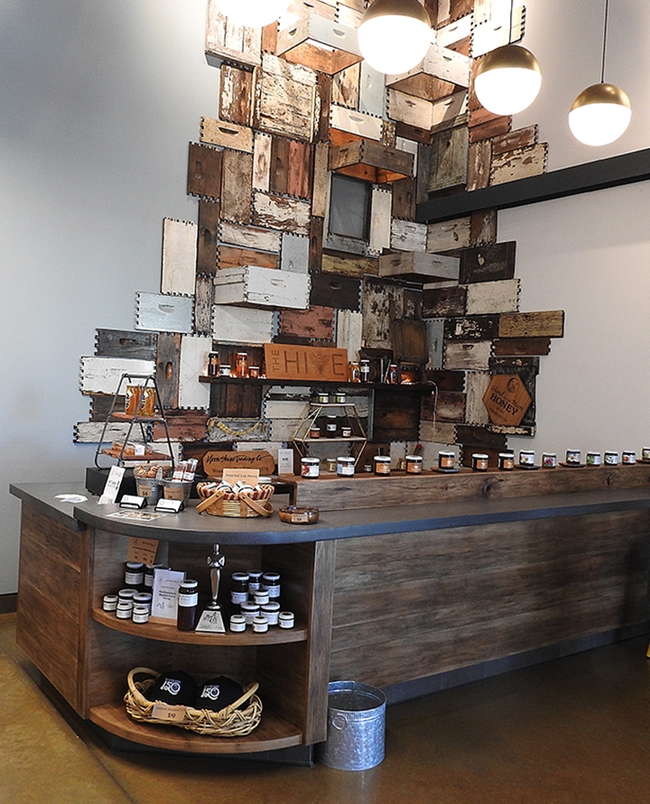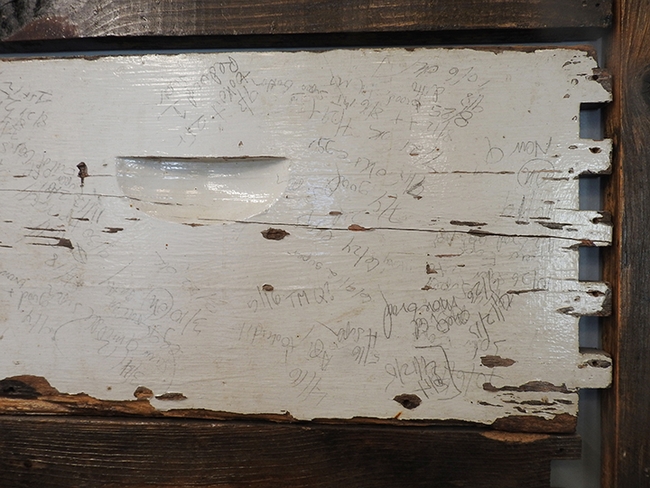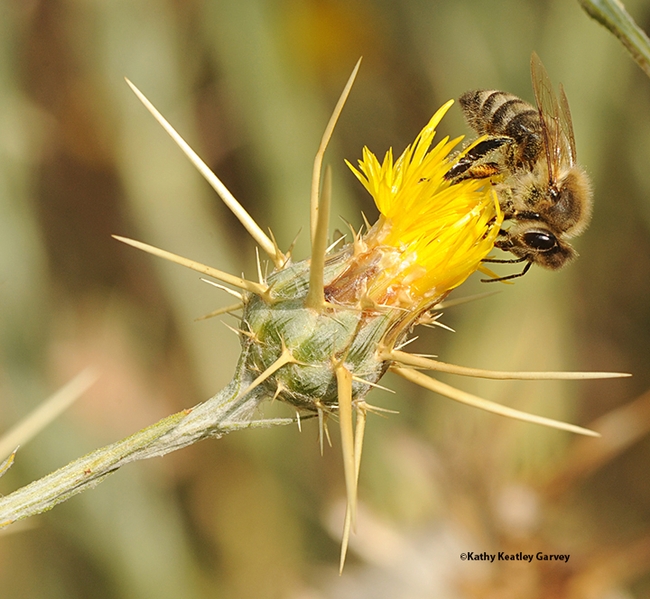- Author: Kathy Keatley Garvey
They're curious little critters.
When solider beetles (family Cantharidae) go on patrol in your garden, don't kill them. They're not being deployed to harm you.
They're the good guys. They eat aphids and other soft-bodied insects.
Sometimes called "leatherwings"--they look like the insect equivalent to the British soldiers in the American Revolution soldiers--soldier beetles compete with lady beetles (aka ladybugs), lacewings, damsel bugs, long-legged flies and other insects for aphids. Larvae of lady beetles and syrphid flies (aka flower flies and hover flies) also feast on aphids.
The UC Statewide Integrated Pest Management Program (UC IPM) provides a good description of the soldier beetle:
"Adult soldier beetles are elongate and usually dark brown to black with orange, red, or yellow. The head is commonly bent downward. The antennae are 11-segmented, threadlike, and commonly held forward of the body. The pronotum is usually wider than the head and wider than long. The wing covers are smooth to velvety appearing and soft and flexible, giving rise to the common name leatherwings. Adults range from 1/16 to 1-1/8 inches (1.5 to 28 mm) long, varying by species....About 160 species of soldier beetles in 11 genera occur in California. Common genera include Cantharis, Chauliognathus, and Podabrus."
Adults are active during the day and usually observed on flowers or leaves infested with aphids or other honeydew-excreting insects," UC IPM says. "When disturbed, adults may withdraw their legs and drop to the ground as if dead. Adults' blackish and red coloration alerts vertebrate predators that cantharid beetles are distasteful; adults, larvae, and pupae can excrete noxious, defensive chemicals from specialized abdominal glands."
None that visited our garden last weekend dropped to the ground. We didn't disturb them, either (we were using a 200mm macro lens).
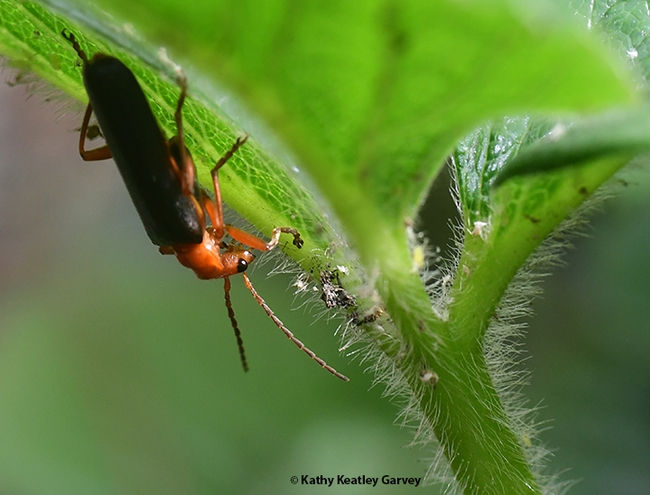
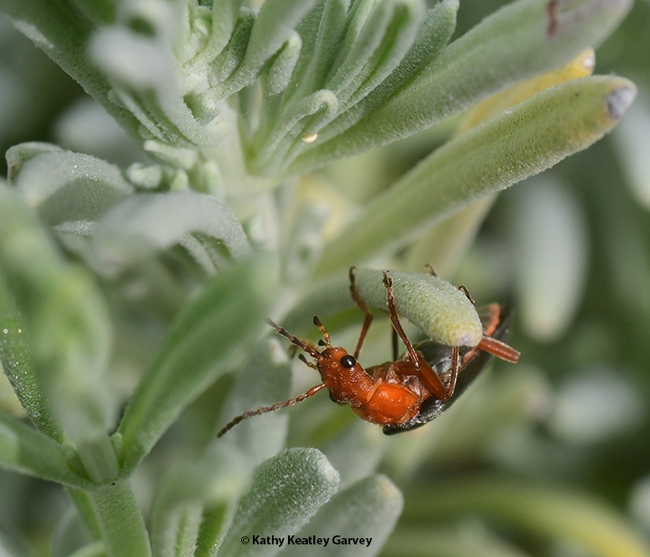
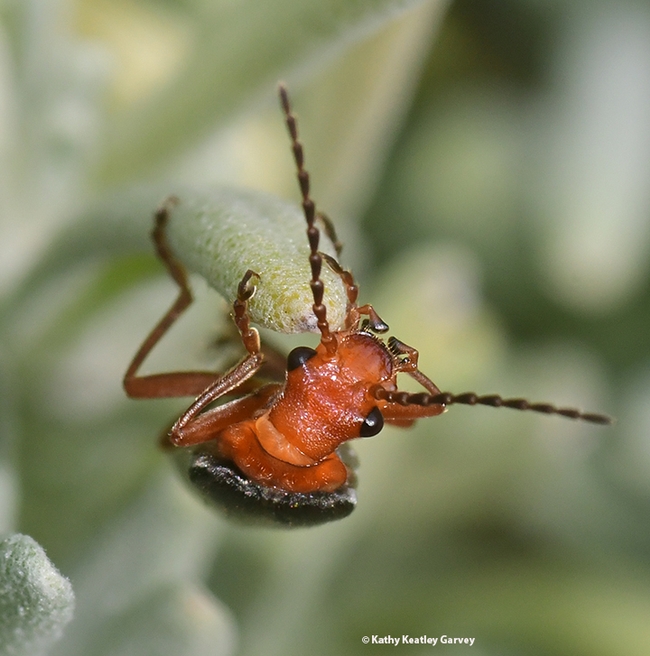
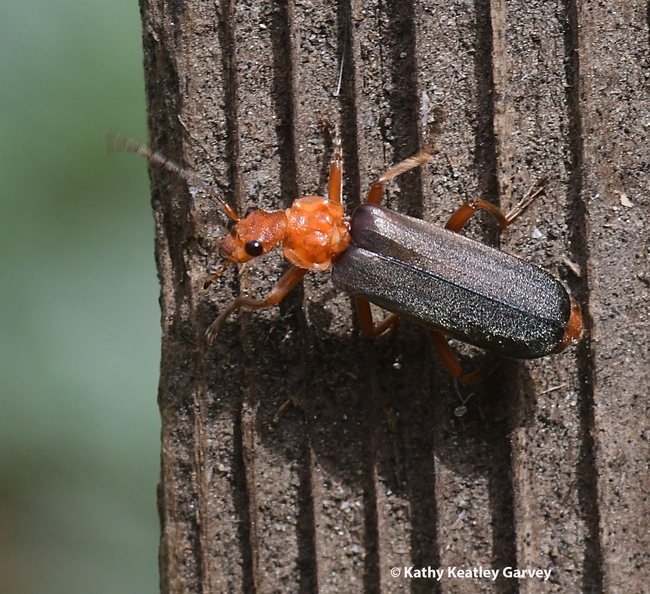
- Author: Kathy Keatley Garvey

Makedonka Mitreva, professor of medicine and genetics, Division of Infectious Diseases, Washington University School of Medicine, St. Louis, will speak on "Multi-omics Applications in Helminth Research" at her seminar set for 4:10 p.m., Pacific Time. The Zoom link:
https://ucdavis.zoom.us/j/99515291076.
"My research takes advantage of next-generation genomic and computational approaches to empower the study of infectious diseases, with a focus on neglected tropical diseases caused by helminths," Mitreva writes in her abstract. "Overcoming the main obstacle related to scarce understanding of molecular mechanisms involved in host invasion and pathogenesis, required generating comprehensive omics datasets from various helminth species. Interrogating such multi-omics data followed by systems biology approaches provided us with opportunity to greatly advance translational helminth research."
On her website, Mitreva points out: "More than 3 billion people worldwide live on less than $2.50 a day. The majority live in low- and middle- income countries, and some in vulnerable communities of high-income countries. Chronic infections in these populations are predominated by parasitic helminths. Helminth infections are typified by long term chronicity accompanied with various symptoms (pain, malnutrition, physical disabilities, rectal prolapse, deformity), cause growth impairment in children, anemia, adverse outcomes in pregnant women and reduced productivity in adults, which all conspire to promote and maintain poverty."
She recently joined the editorial board of Frontiers in Parasitology as section chief editor.
Mitreva says her lab "uses systems biology approaches to provide fundamental molecular information for these parasitic infections of importance to global health. The acquired knowledge accelerates both basic and translational research and provides practical results for global health improvement." Her lab's broad interest in global health improvement, she points out, is reflected in many other collaborative projects, including malaria, tuberculosis and medical metagenomics.
Mitreva holds bachelor and master's degrees in biology, 1990 and 1994, respectively, from Saints Cyril and Methodius University of Skopje, Skopje, Republic of Macedonia. She received her doctorate in plant sciences, molecular and population genetics in 2001 from the Wageningen University and Research Centre, Wageningen, The Netherlands Laboratory of Nematology.
For any technical issues encountered with the virtual seminar, reach coordinator Shahid Siddique at ssiddique@ucdavis.edu.
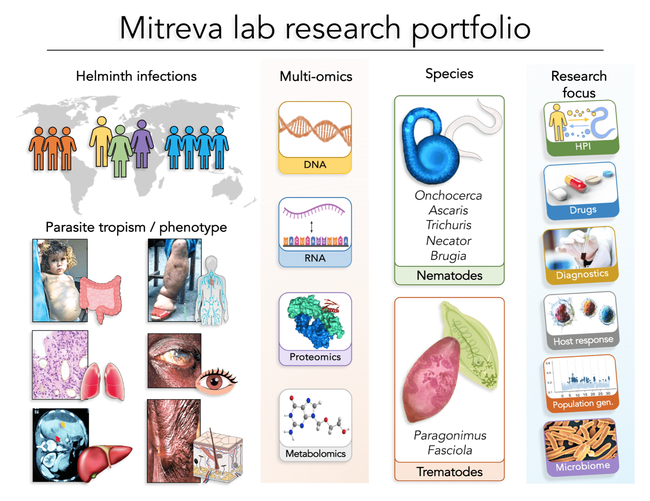
- Author: Kathy Keatley Garvey
Ever watched a bumble bee ballet?
Bumble bees may look clumsy in flight, but they get the job done.
We recently marveled at the yellow-faced bumble bees, Bombus vosnesenskii, foraging on lacy phacelia, Phacelia tanacetifolia, on the UC Davis campus.
This is a native bumble bee and a native plant.
Bumble bees do love Phacelia (think of Cecelia when you're pronouncing it--and there's probably a Cecelia out there who loves Phacelia as much as bumble bees do.)
B. vosnesenskii is native to the west coast of North America, and its range spans from British Columbia to Baja California. "The genus name Bombus--the bumblebee--comes from the Latin word which means a buzzing or humming sound, according to Wikipedia. "There are 250 species split into 38 subgenera within the genus Bombus."
Phacelia, a species in the borage family, Boraginaceae, is native to the southwestern United States and northern Mexico. In Greek, its name means means "bundle," in reference to its clustered flowers, according to Wikipedia, while tanacetifolia means "with leaves resembling those of Tanacetum."
Plant Phacelia and you'll be graced with bumble bee ballets. No ballet lessons required.
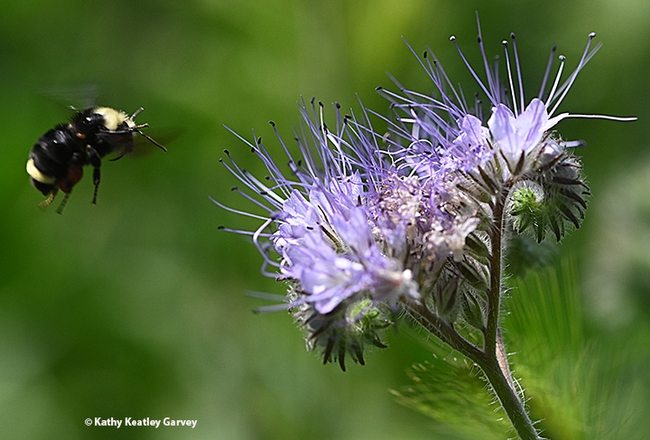
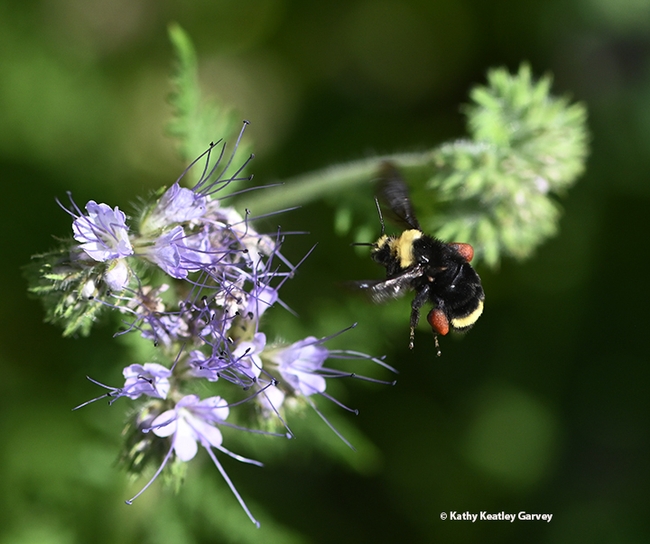
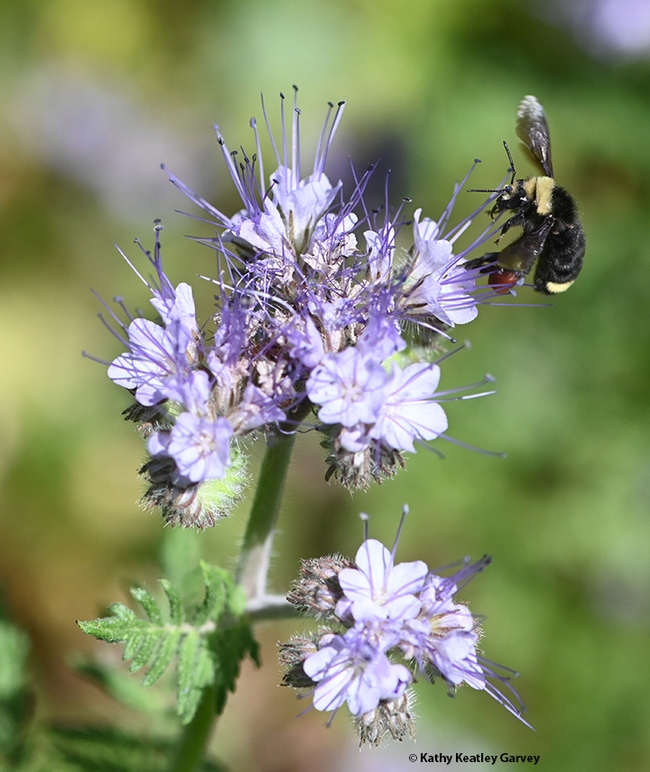
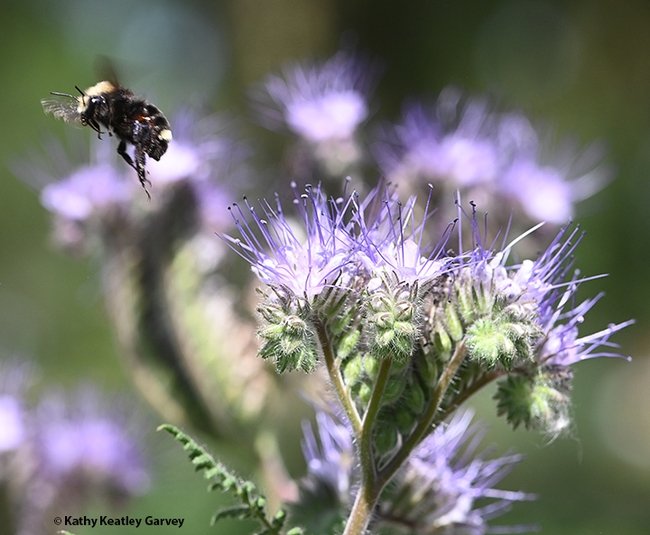
- Author: Kathy Keatley Garvey
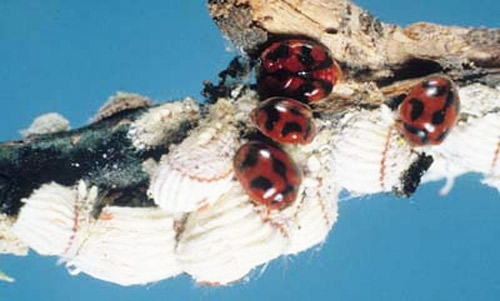
And curious photographers.
Last weekend we spotted cottony cushion scale, Icerya purchasi, infesting the twigs and branches of our Nandina (Nandina domestica), planted 22 years ago. This scale insect is more commonly found on citrus crops and Pittosporum, but there it was.
It's a native of Australia and apparently made its way to California on acacia plants around 1868 or 1869, and began infesting citrus groves in southern California. It's now found throughout the world, wherever citrus is grown. Pick it up and it's as light as a feather and soft as cotton.
If you look closely at a mature cottony cushion scale (hermaphrodite), you can see that it's reddish brown with black hairs. It produces a ridged white egg sac encasing hundreds of brilliant red eggs--the color of pomegranate kernels.

"Like other scales, cottony cushion scale decreases the vitality of its host by sucking phloem sap from the leaves, twigs, branches, and trunk," according to UC IPM. "Feeding can result in defoliation and dieback of twigs and small branches when infestations are extremely heavy. Heavy populations can severely reduce the yield of citrus trees. Like soft scales, cottony cushion scale excretes honeydew, which is usually accompanied by blackish sooty mold growth and ants."
"Cottony cushion scale has two to three generations a year," UC IPM tells us. "Unlike most other scales, it retains its legs and its mobility throughout its life. Cottony cushion scale completes its life cycle in three months during warm weather conditions."
Its most famous natural enemy is the vedalia beetle, Rodolia cardinalis, introduced from Australia in the 1890s to save California's citrus crops. Vedalia beetle vs. cottony cushion scale--this is a clear-cut case of successful biological control. Vedalia beetles are distinguished by their darker red domes with splotchy black markings.
Another natural enemy is the parasitic fly Cryptochaetum iceryae, which lays its eggs inside the cottony cushion scale. "It deposits one to four eggs inside each second-instar, third-instar, or adult female scale body," UC IPM points out. "The eggs hatch into larvae that feed within the scale." (See more information on the UC IPM website)
Interesting that we've never found the cottony cushion scale on our nearby tangerine and lemon trees. "Marked Safe from Cottony Cushion Scale."
For now!
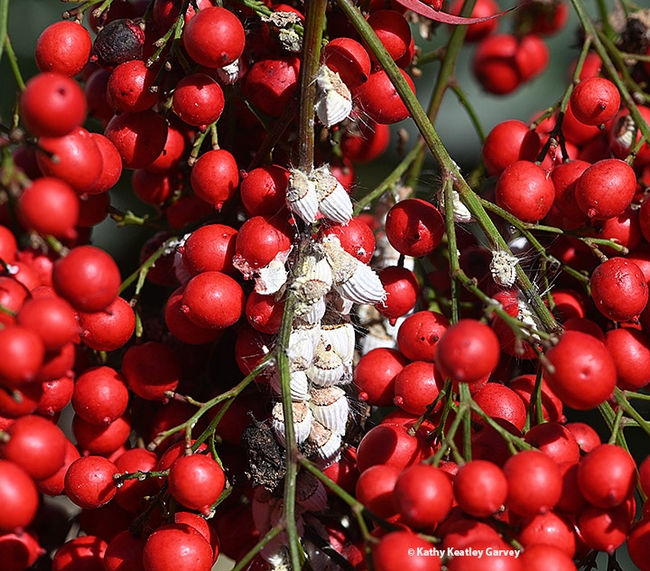
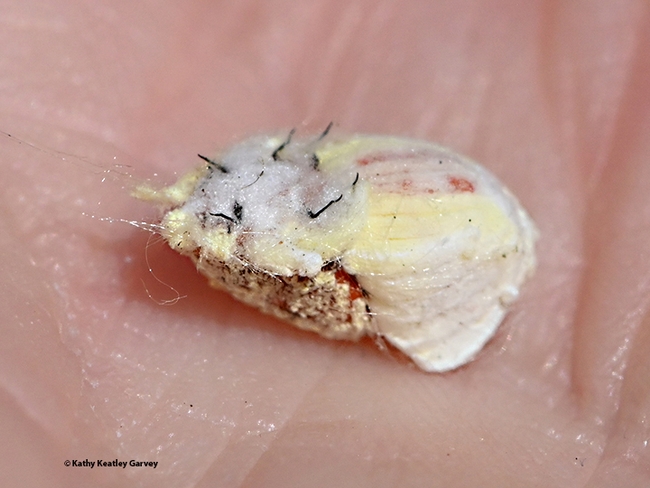
- Author: Kathy Keatley Garvey
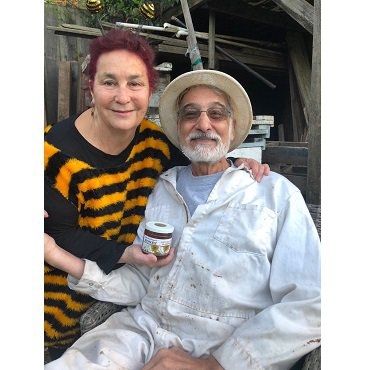
Zeldner, who died in 2018 at age 71, would have been proud to see the family business he founded, Z Specialty Food, develop into a 20,000 square-foot facility at 1221 Harter Way, Woodland.
It was his dream.
It includes a processing plant, The Hive (tasting room for honey and mead, a gift shop and a conference room), an outdoor courtyard and a two-acre pollinator garden.
He particularly would have been proud to see the floor-to-ceiling hive decor in The Hive: the very bee boxes he tended to when he visited his apiary. As many beekeepers do, he wrote his observations on the boxes. You can still see his notations.
Zeldner worked as a commercial beekeeper and studied beekeeping at UC Davis before founding the Moon Shine Trading Company in 1979. That was the beginning of Z Specialty Food.
But it all began with yellow starthistle. "He loved it so much that he began giving it away to his friends, and quickly realized he was going broke doing so," remembers his widow, Amina Harris, the director of the UC Davis Honey and Pollination Center.
His son, Joshua "Josh" Zeldner, who now runs the company--he calls himself "the nectar director"--wrote in an eulogy: "He helped introduce consumers to the wide range of honeys not found in the bear-shaped squeeze bottles at the supermarket."
"Born in Buffalo, New York, Ishai was a fourth-generation food merchant, and grew up in the specialty food business," Josh wrote. "His family owned Zeldner's Market, which specialized in exotic game. Ishai spent his Saturdays and summers as a kid working in the store, learning how to butcher an array of animals, and, most importantly, how to successfully run a business."
"After college, Ishai spent several transformational years living on Kibbutz Beit Hashita in Israel. The kibbutz beekeeper chose Ishai to assist him based on his size and strength; neither man had any idea how much it would influence the rest of his life. It was there that he not only learned how to keep bees, but fell in love with beekeeping and honey. He also took the name Ishai. He returned to Buffalo to assist with the management and sale of his family's business at the sudden death of his father. This significant gesture ensured that his mother could afford to comfortably retire."
Ishai's vision was to "bring top quality varietal honey to the table," Josh wrote. And of course, yellow starthistle was "the first one to capture his imagination and his palate."
"Soon after, he married Amina Harris who ran the business by his side in Winters and then Davis. Together they raised two children – Shoshana and Joshua. Ishai taught them both how to appreciate honey straight from the hive and keep bees of their own. Together, Ishai and Amina created a line of nationally-recognized award-winning specialty food products. Today, Moon Shine Trading Company is part of the family of Z Specialty Food, LLC, based in Woodland, California. Z Specialty is known throughout the country for offering over 30 varietal honeys selected from across North America." (See eulogy.)
Fast forward to today. Plans are underway--buzzing, really--for a gala family event. The Hive will host a Nature Day celebration, free and open to the public, from 11 a.m. to 5 p.m., Saturday, April 2. It's a day to emphasize the importance of bees, honey, pollination and conservation. The public can tour the processing plant, taste honey and mead, explore the gift shop, sit in the outdoor courtyard and visit the pollinator garden. Workshops, games, a display of bee specimens by the Bohart Museum of Entomology, and a photo display of honey bees are planned. Dogs are welcome, too! (See schedule)
